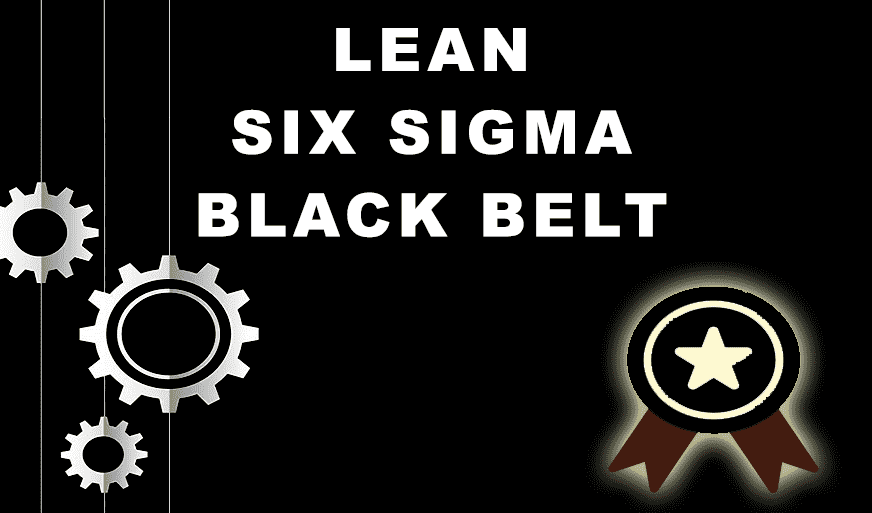A Deep Dive into the Power of Lean Continuous Improvement Process
-
 By Sushmith
By Sushmith - Published on Nov 14 2023

Table of Contents
- How Do Companies Save Millions with LCI?
- Understanding Lean Continuous Improvement Process
- Real-World Application of Lean CI Process
- Overcoming Challenges in Lean CI Process
- A Step-by-Step Guide to Lean CI Implementation
- Measuring and Monitoring Lean CI Process Success
- Sprintzeal's Lean Six Sigma Courses for Process Excellence
- Frequently Asked Questions (FAQs)
- Summary
How Do Companies Save Millions with LCI?
In the fast-paced business domain, staying competitive and thriving is a constant challenge. To achieve this, companies have begun to adapt the Lean Continuous Improvement Models into their strategies as a game-changer, transforming businesses into efficient and money-saving powerhouses.
It's not just a buzzword; it's a proven path to efficiency and excellence.
Unlocking the Savings Potential
Imagine a scenario where a company finds itself drowning in inefficiencies, leading to wasted resources, increased production costs, and dissatisfied customers. This is where Lean Continuous Improvement Process enters the stage, offering a lifeline to businesses of multiple domains.
The Essence of LCI
Lean Continuous Improvement is a systematic approach that helps identify, understand, and eliminate the waste within a company's processes. Waste refers to anything that does not add value to the end product or service. Lean Continuous Improvement Process aims to streamline operations, optimize resources, and enhance the quality of output, ultimately resulting in cost savings.
The Real-World Impact
The real power of LCI becomes evident when we look at its impact on actual businesses. Companies across various industries have harnessed the potential of Lean Continuous Improvement to save millions, demonstrating the tangible benefits of lean quality improvement in action.
Whether it's reducing production cycle times, improving customer service, or minimizing defects, LCI empowers organizations to make significant savings by embracing lean process improvement principles, which involve eliminating non-essential processes and making their operations more efficient.
Understanding Lean Continuous Improvement Process
Lean Continuous Improvement Methods aims to enhance operational efficiency and eliminate waste from business processes. The LCI process is structured based on a set of principles and practices that help organizations with cost savings, improved quality, and customer satisfaction. Let's break down the key elements of the Lean Continuous Improvement Process:

1) Identifying Value
The first step in Implementing Lean Continuous Improvement Process involves identifying what customer’s value in a product or service. This is the foundation step upon which all other activities are built. By understanding and categorizing the value from the customer's perspective, organizations can focus their efforts on delivering what truly matters.
2) Value Stream Mapping (VSM)
Value Stream Mapping (VSM) is a visual representation of the end-to-end process, providing a clear view of how work flows and where waste occurs. It helps organizations identify areas for improvement and prioritize changes based on their impact on value delivery.
3) Eliminating Waste
The Lean Continuous Improvement Process places a strong emphasis on identifying and eliminating waste, known as "MUDA." There are seven common forms of waste in Lean Continuous Improvement: overproduction, waiting, transportation, inappropriate processing, excess inventory, unnecessary motion, and defects. The goal is to minimize or eradicate these inefficiencies.
4) Cultivating a Culture of Kaizen
Central to LCI is the concept of Kaizen, which means "continuous improvement" in Japanese. This involves making small, incremental changes to processes on an ongoing basis. Employees at all levels are encouraged to actively seek opportunities for improvement and suggest changes. A culture of Kaizen fosters innovation, engagement, and a relentless pursuit of excellence.
5) Standardizing Processes
Once improvements are made, it's crucial to standardize the new, more efficient processes. This ensures that gains are sustained and that everyone in the organization follows the improved procedures consistently.
6) Monitoring and Measuring
Key performance indicators (KPIs) are used to monitor the impact of LCI initiatives. This allows organizations to measure the success of their improvements and make further adjustments as necessary.
This dynamic approach aids organizations in saving millions on investment, improving quality, and staying ahead in the competitive business landscape. To conclude, Lean Continuous Improvement Process is about delivering value to customers by eliminating waste, optimizing processes, and developing a culture of continuous improvement.
Real-World Application of Lean CI Process
While understanding the theoretical framework of Lean Continuous Improvement (LCI) is crucial, its real power becomes evident when we observe it in action. This section delves into the practical application of Lean Continuous Improvement Process within various industries and showcases its transformative impact.

Manufacturing Excellence
In manufacturing, LCI has a long-standing history of driving efficiency. Companies have used Lean CI principles to optimize production processes, reduce lead times, and minimize defects. The result is not just improved operational performance but also substantial cost savings.
Healthcare Efficiency
Healthcare is another sector where Lean Continuous Improvement is making a difference. By streamlining administrative tasks, reducing waiting times, and improving resource allocation, hospitals and clinics enhance patient care while minimizing costs.
Customer Service Enhancement
In customer service, Lean CI helps organizations handle inquiries more efficiently, reduce response times, and increase customer satisfaction. This is achieved by identifying bottlenecks and streamlining service delivery.
Retail and Inventory Management
Retailers use Lean CI to optimize their supply chains, reducing excess inventory and ensuring that products reach customers precisely when needed. The result is less capital tied up in stock and a more responsive operation.
Software Development
Even in the world of software development, Lean CI finds a place. Agile methodologies, rooted in Lean principles, emphasize iterative improvement, collaboration, and delivering value to users. This approach allows for rapid, customer-focused development while minimizing waste.
These are just a few examples of how Lean CI processes are making a tangible impact on different industries. By addressing the specific challenges and inefficiencies unique to each sector, lean process improvement has demonstrated its versatility and effectiveness. Let’s now explore the challenges organizations may face when implementing Lean Continuous Improvement Process and how to overcome them effectively.
Overcoming Challenges in Lean CI Process
While Lean Continuous Improvement (LCI) offers a powerful framework for optimizing processes and reducing waste, implementing it is not without its challenges. In this section, we'll explore the common hurdles organizations may face and also provide strategies to overcome them effectively.
1) Resistance to Change
Challenge: People are naturally resistant to change, especially when it disrupts established routines and workflows. Implementing Lean CI often necessitates a cultural shift in the organization.
Strategy: Engage employees at all levels by emphasizing the benefits of Lean CI. Create a culture that welcomes feedback and celebrates small wins. Encourage involvement and buy-in from team members to make them active participants in the process.
2) Lack of Expertise
Challenge: Successfully implementing Lean CI requires knowledge and expertise. Many organizations lack the in-house skills and resources to drive the process.
Strategy: Invest in training and development programs to equip employees with the necessary skills. Lean CI training, such as Sprintzeal's Lean Six Sigma courses, can bridge the knowledge gap and empower your team to lead the transformation effectively.
3) Sustaining Change
Challenge: It's one thing to implement Lean CI changes; it's another to sustain them. Without ongoing commitment, the organization may revert to old, inefficient practices.
Strategy: Implement a robust system for monitoring and measuring key performance indicators. Regularly review progress, celebrate successes, and address any deviations promptly. Make continuous improvement a part of the organizational culture.
4) Overcoming Cultural Barriers
Challenge: Existing workplace cultures can pose a barrier to Lean CI, particularly if they prioritize hierarchy over innovation and process improvement.
Strategy: Foster a culture of openness and transparency. Encourage employees to voice their concerns and ideas for improvement. Leadership should lead by example, demonstrating a commitment to continuous improvement.
5) Resistance to Data-Driven Decisions
Challenge: Lean CI relies on data and evidence-based decision-making. Some employees may resist this shift, preferring traditional, intuition-based decision-making.
Strategy: Provide training and education on the importance of data-driven decision-making. Showcase the benefits of using data to identify opportunities and measure success. As employees see the impact of data, they are more likely to embrace this approach.
By acknowledging these challenges and implementing the strategies outlined, organizations can clear the path for successful Lean Continuous Improvement Process implementation. In the next section, we'll provide a step-by-step guide to help organizations embark on their Lean CI journey, addressing these challenges along the way.
A Step-by-Step Guide to Lean CI Implementation
Implementing Lean Continuous Improvement Process requires a systematic approach to transform an organization's processes, minimize waste, and deliver maximum value to customers. In this section, we'll provide a structured roadmap to guide organizations on their journey to Lean CI excellence.

Step 1: Identifying Improvement Opportunities
– Assessment: Begin by conducting a comprehensive assessment of your current processes. This involves evaluating value streams, identifying waste, and pinpointing areas in need of improvement.
– Engage Teams: Involve employees from all levels in the process. They are often closest to the work and can provide valuable insights. Encourage them to highlight opportunities for enhancement.
Step 2: Analyzing Current Processes
– Value Stream Mapping (VSM): Create a visual map of your current processes using VSM. This map will help you identify bottlenecks, redundancies, and areas where value is not being added.
– Data Collection: Gather data on key performance indicators to establish baseline metrics. This data will serve as a reference point to measure progress.
Step 3: Designing Future-State Processes
– Set Objectives: Define clear, measurable objectives for your Lean CI initiative. These objectives will guide the development of future-state processes.
– Process Redesign: With the data and insights from VSM, work with teams to design more efficient processes that eliminate waste and enhance value delivery.
Step 4: Implementing Changes
– Pilot Programs: Test your proposed process changes in small-scale pilot programs. This allows you to identify any unforeseen issues and refine the processes.
– Training: Ensure that employees are trained in the new processes and understand their roles in maintaining efficiency.
Step 5: Sustaining and Standardizing Improvements
– Documentation: Document the improved processes, creating clear and easily accessible guidelines for employees.
– Regular Review: Continuously monitor the performance of the new processes using KPIs and engage in regular reviews to identify any deviations from the desired state.
– Feedback Loop: Encourage employees to provide feedback, and make necessary adjustments to maintain process improvements.
Step 6: Celebrate Success and Plan for Continuous Improvement
– Recognize Achievements: Celebrate the milestones and achievements of your Lean CI journey. Acknowledge the hard work and commitment of your teams.
– Plan for Ongoing Improvement: Lean CI is not a one-time project but an ongoing journey. Plan for continuous improvement, setting new objectives and working towards higher levels of efficiency.
Following these steps ensures a methodical and structured approach to Lean CI implementation.
By actively involving teams and using data to drive decisions, organizations can create a culture of continuous improvement and drive lasting cost savings and value enhancement. Let’s now explore how to measure the success of your Lean Continuous Improvement Process.
Measuring and Monitoring Lean CI Process Success
Once an organization has embarked on Lean Continuous Improvement Process, it's crucial to measure and monitor the success of the initiatives. Implementing Lean Quality Improvement Process ensures sustained progress, enhancing efficiency and customer satisfaction.
Key Performance Metrics for Process Improvements

- Cycle Time Reduction: One of the primary objectives of LCI is to reduce the time it takes to complete processes. Measuring cycle time can highlight areas where efficiency has improved.
- Defect Rate: Monitoring the number of defects or errors in products or services is essential. A lower defect rate indicates improved quality.
- Cost Reduction: Assessing the cost savings achieved through LCI initiatives provides a tangible measure of success. This can include reduced material costs, labor costs, and overhead.
- Inventory Reduction: Decreasing excess inventory and minimizing carrying costs is a key indicator of LCI success.
- Lead Time Reduction: Shortening the time it takes to fulfill customer orders can improve customer satisfaction and reduce working capital tied up in inventory.
Calculating ROI in Lean CI: How Much Have You Gained?
Return on Investment (ROI) is a critical metric for assessing the financial impact of Lean CI initiatives. By comparing the costs of implementation with the savings achieved, organizations can determine the return on their investment.
The ROI formula:
ROI = ×100
A positive ROI indicates that an organization is not only saving money but also gaining a return on the resources invested in the LCI process.
Regular Progress Reviews
To ensure that Lean Continuous Improvement Process initiatives are on track and delivering the expected results, organizations should conduct regular progress reviews. These reviews provide opportunities to identify any deviations, celebrate successes, and make necessary adjustments.
By using these metrics and conducting regular reviews, organizations can confidently measure the success of their lean quality improvement initiatives. This data-driven approach ensures that LPI remains focused on delivering value and efficiency while maintaining a customer-centric approach.
Sprintzeal's Lean Six Sigma Courses for Process Excellence
We understand that mastering Lean Continuous Improvement Process is not just a choice; it's a strategic move towards unparalleled excellence. For you to master his process, look no further than Sprintzeal's industry-leading Lean Six Sigma courses.
Why Sprintzeal's Lean Six Sigma Courses?
🚀 Accelerate Your Learning
🌟 Expert Guidance
🎓 Flexible Learning Options
🔧 Hands-On Approach
Which Lean Six Sigma Level is Right for You?
🟡 Lean Six Sigma Yellow Belt: Perfect for beginners, this level provides a solid foundation in Lean CI principles. It's your gateway to understanding the essentials and initiating improvement projects.
🟢 Lean Six Sigma Green Belt: Designed for aspiring leaders, this level equips you with advanced knowledge and techniques. Lead small to medium-scale Lean CI projects with confidence and expertise.
⚫ Lean Six Sigma Black Belt: For seasoned professionals, this level delves deep into complex methodologies, statistical analysis, and project leadership. Become a true expert and drive significant organizational change.
Certify Your Expertise, Transform Your Future
Earn your Lean Six Sigma certification and stand out in today's competitive landscape.
Don't just Learn; Thrive; and Leap toward process excellence!
Let Sprintzeal be your partner in this transformative journey.
🚀 Explore Our Lean Six Sigma Courses and Embark on Your Lean CI Journey Today!
Frequently Asked Questions (FAQs)
What is CI Six Sigma?
CI Six Sigma, often known as Continuous Improvement Six Sigma, is a combination of Lean Continuous Improvement (CI) principles and Six Sigma methodologies. It aims to reduce waste, defects, and variations in processes, ultimately leading to increased efficiency and quality.
What is CIP in lean management?
CIP, in lean management, stands for Continuous Improvement Process. It refers to the ongoing efforts to enhance processes, eliminate waste, and drive efficiencies within an organization.
What is the CI methodology of lean?
The CI methodology of lean, or Continuous Improvement methodology, revolves around the systematic identification, elimination of waste, and optimization of processes to deliver value to customers while reducing costs and improving quality.
What are the 4 P in lean management?
The 4 P's in lean management are:
Purpose: Clearly define the purpose and value that a product or service delivers to customers.
Process: Streamline and optimize processes to eliminate waste and enhance value delivery.
People: Engage and empower employees at all levels to actively participate in continuous improvement.
Problem Solving: Foster a culture of problem-solving and innovation to drive improvements.
What are the 4 stages of continuous improvement?
The 4 stages of continuous improvement typically include:
Identify Opportunities: Identify areas for improvement within processes.
Analyze and Plan: Analyze data and plan for changes and enhancements.
Implement Changes: Put the planned improvements into action.
Review and Standardize: Continuously review the impact of changes and standardize improved processes.
What are the 5 lean principles of process improvement?
The 5 lean principles of process improvement are:
Value: Define value from the customer's perspective.
Value Stream: Map the value stream to identify waste.
Flow: Streamline processes to create continuous flow.
Pull: Establish a pull system to align production with customer demand.
Perfection: Continuously pursue perfection by eliminating waste and improving processes.
Summary
In this comprehensive guide, we've explored the world of Lean Continuous Improvement Process, understanding how organizations save millions by streamlining processes, eliminating waste, and delivering value to their customers.
Lean Continuous Improvement is not just a methodology; it's a transformative force that empowers organizations to thrive in a competitive landscape, reduce costs, and enhance quality by adopting Lean Continuous Improvement Process.
By adopting Lean Continuous Improvement Process, companies of multiple industries have yoked its potential, attesting the immense value it brings.
Now, if you're ready to take your understanding of Lean Continuous Improvement to the next level and become a catalyst for change within your organization, look no further. At Sprintzeal, we offer a range of Lean Six Sigma courses designed to equip you with the essential knowledge and skills.
Subscribe to our newsletter for the latest insights, exclusive offers, and updates on such Informative Resources.
Subscribe to our Newsletters
Popular Programs
Trending Posts
Senior Quality Manager Interview Questions and Answers 2024
Last updated on Nov 28 2023
Explaining QMS Documentation Structure: Benefits and Best Practices
Last updated on Aug 28 2024
Benefits of QMS Certification for Your Business
Last updated on Jul 1 2024
Top 10 Lean Manufacturing Tools for Optimal Productivity
Last updated on Jan 15 2024
The Ultimate Guide to ISO 9001: Boosting Quality and Certification Success
Last updated on Jul 24 2024
Lean Waste Reduction Strategies: Boost Efficiency and Cut Costs
Last updated on Jan 10 2024
Categories
- Agile Management 54
- AI and Machine Learning 42
- Big Data 53
- Business Management 51
- Cloud Computing 44
- Digital Marketing 56
- Information Security 8
- IT Hardware and Networking 17
- IT Security 103
- IT Service Management 29
- Leadership and Management 1
- Microsoft Program 2
- Other 43
- Programming Language 31
- Project Management 162
- Quality Management 75
- Risk Management 8
- Workplace Skill Building 2
Trending Now
Top Career benefits of Lean Six Sigma Green Belt
ArticleLean methodology, Six Sigma methodology and Lean Six Sigma Explained
ArticleSix Sigma Black Belt Certification – Value and Career Benefits in 2024
ArticlePareto Chart in Six Sigma - Explained
ArticleQuality Management Interview Questions 2024
ArticleSix Sigma Certification Guide - A Professional's Guide
ArticleSix Sigma Yellow Belt Certification - Six Sigma for Beginners
ArticleQuality Control Explained – Six Sigma
ArticleTotal Quality Management - A Complete Guide for Beginners
ArticleQuality Assurance in Six Sigma Explained
ArticleQuality Assurance vs Quality Control
ArticleSix Sigma Certification – Everything you Need to Know About Getting Certified
ArticleLean Six Sigma on Resume for Rewarding Career Benefits
ArticleQuality Manager Interview Questions and Answers for 2025
ebookService Delivery Manager Interview Questions and Answers (With Examples)
ArticleSix Sigma Interview Questions and Answers 2024
ArticleHow to become a Quality Analyst
ArticleA Supply Chain Management Guide to Mastering Logistics End to End
ArticleSenior Quality Manager Interview Questions and Answers 2024
ArticleTop 30 Quality Analyst Interview Questions and Answers 2025
ArticleFinancial Analyst Interview Questions and Answers 2024
ArticleRisk Manager Interview Questions and Answers 2024
ArticleCompliance Manager Interview Questions and Answers 2024
ArticleOperation Manager Interview Questions and Answers
Article5 Lean Continuous Improvement Principles to Supercharge Your Operations
ArticleHow to Become a Quality Manager - Career, Job Scope and Certifications
ArticleEssential Components of a Quality Management System
ArticleSix Sigma Certifications - Reasons Why you Should Get Them
ArticleTop Qualities of a Good Manager and a Leader
ArticleLearn about Statistical Process Control (SPC) and its top applications
ArticleCost of Poor Quality - A Detailed Guide
ArticleImplementing 5S Methodology for Better Work Efficiency
ArticleWhat Is Lean Management?
ArticleBest Six Sigma Books in 2024
ArticleLeadership vs Management - The Ultimate Guide
ArticleQuality Assurance Plan - Six Steps To Quality Assurance Plan
ArticleOperational Planning Creation, Key Elements and its Benefits
ArticleA Complete Guide to Product Life Cycle Stages 2025
ArticleSix Sigma tools for DMAIC Phases
ArticleWhat Is Lean Manufacturing?- An Overview
ArticleThe Lean Continuous Improvement Model: A Comprehensive Guide
ArticleDMAIC vs. DMADV: Key Differences and Choosing the Right Six Sigma Methodology
ArticleLean Continuous Improvement Methods for Business Excellence
ArticleIntroduction to Lean Manufacturing- Definitions, Framework, and More
ArticleUnderstanding the Key Principles of Lean Manufacturing
ArticleSecret to Unlock Organizational Excellence: Stages of Continuous Improvement
ArticleLean Continuous Improvement: A Detailed Guide to Mastering Organizational Quality
ArticleLean Waste Management: The Ultimate Guide 2023
ArticleA Deep Dive into Lean Continuous Improvement Tools
Article8 Wastes of Lean - Strategies for Identification and Elimination
ArticleThe Ultimate Guide to Lean Manufacturing
ArticleUnderstanding Lean Manufacturing's Pros and Cons
ArticleLean Waste Reduction Strategies: Boost Efficiency and Cut Costs
ArticleTop 10 Lean Manufacturing Tools for Optimal Productivity
ArticleBeyond the Basics: Benefits of Lean Continuous Improvement
ArticleWhat are Quality Standards? | A Guide to ISO Standards
Article7 Important Types of Quality Management System
ArticleA Comprehensive Guide to Quality Management Systems
ArticleISO 9001 Standard: Benefits and Certification
ArticleBenefits of QMS Certification for Your Business
ArticleStep-by-Step Implementation Guide to ISO 9001
ArticleThe Ultimate Guide to ISO 9001: Boosting Quality and Certification Success
ArticleQuality Management System – QSM Approaches and Methodologies
ArticleHow to Effectively Implement a Robust Quality Management System?
ArticleExplaining QMS Documentation Structure: Benefits and Best Practices
ArticleWho Needs ISO 9001 Certification and Why?
ArticleKey Elements of ISO 9001:2015 Quality Management System
ArticleOvercoming Common Challenges in ISO 9001 Certification: Tips and Best Practices
ArticleBest Quality Management Tools
ArticleTotal Quality Management (TQM) vs. Six Sigma
ArticleQuality Manager Salary: What Freshers & Experts Earn in 2025
ArticleCertified Scrum Product Owner: Job Roles And Responsibilities
ArticleTips for Continuous Integration Testing: Streamlining QA
Article10 Quality Management Strategies Adopted by Top Managers
Article

















